Morphology
Tortoise of 15-18 cm long (adults), the Hermann’s tortoise has a horny spur at the tip of the tail, orange-black dense patterns and lying on the back of the shell (carapace), two regular black bands on the abdomen (plastron) and the thickness of the suture of the pectoral scute smaller than that of the femoral scute.
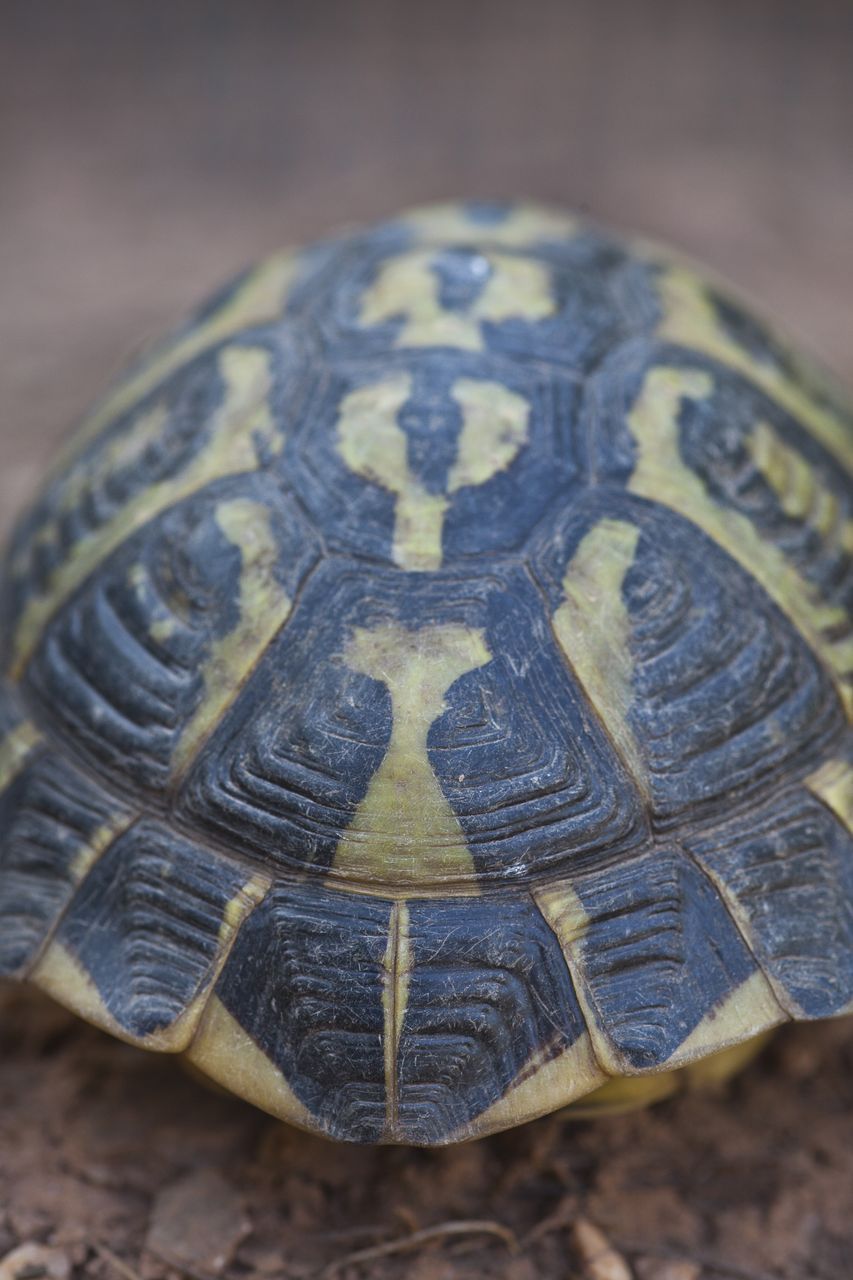
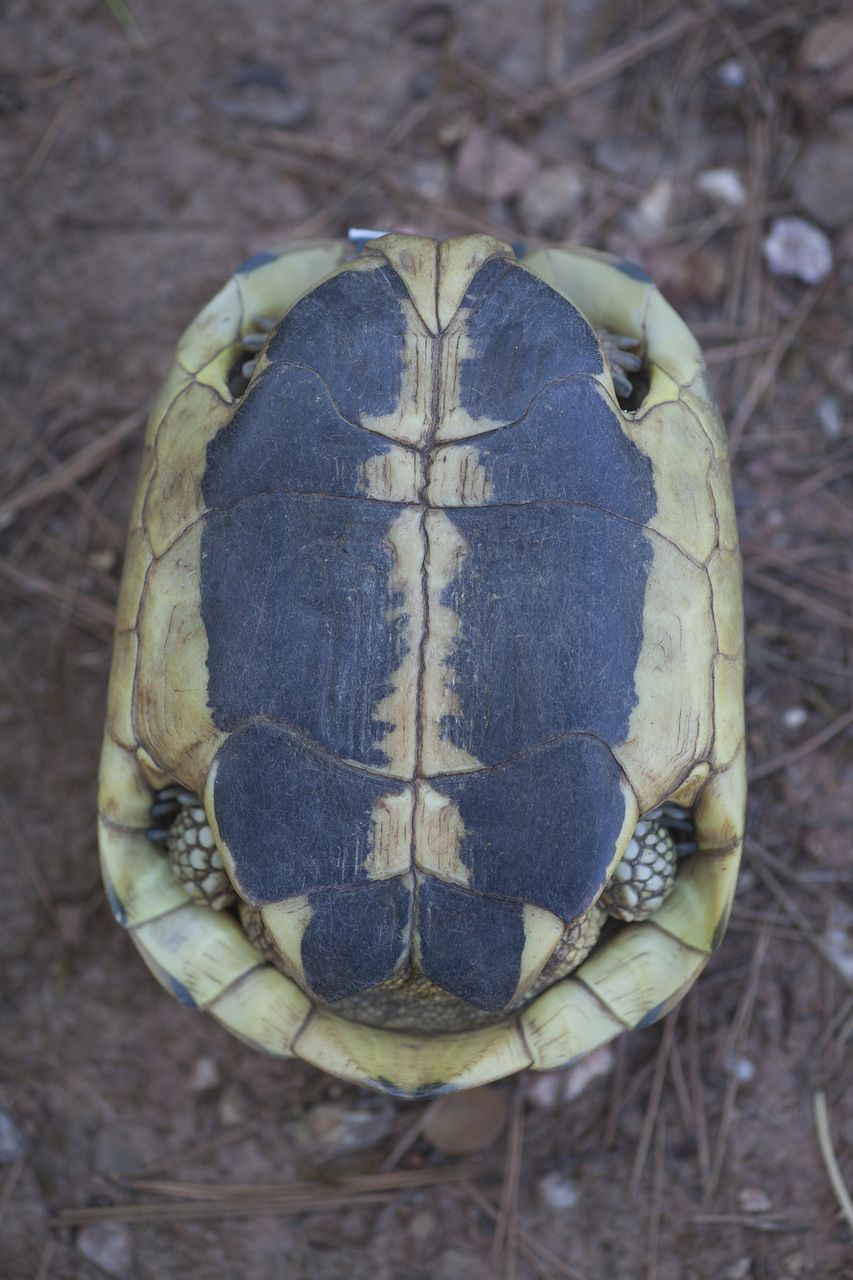
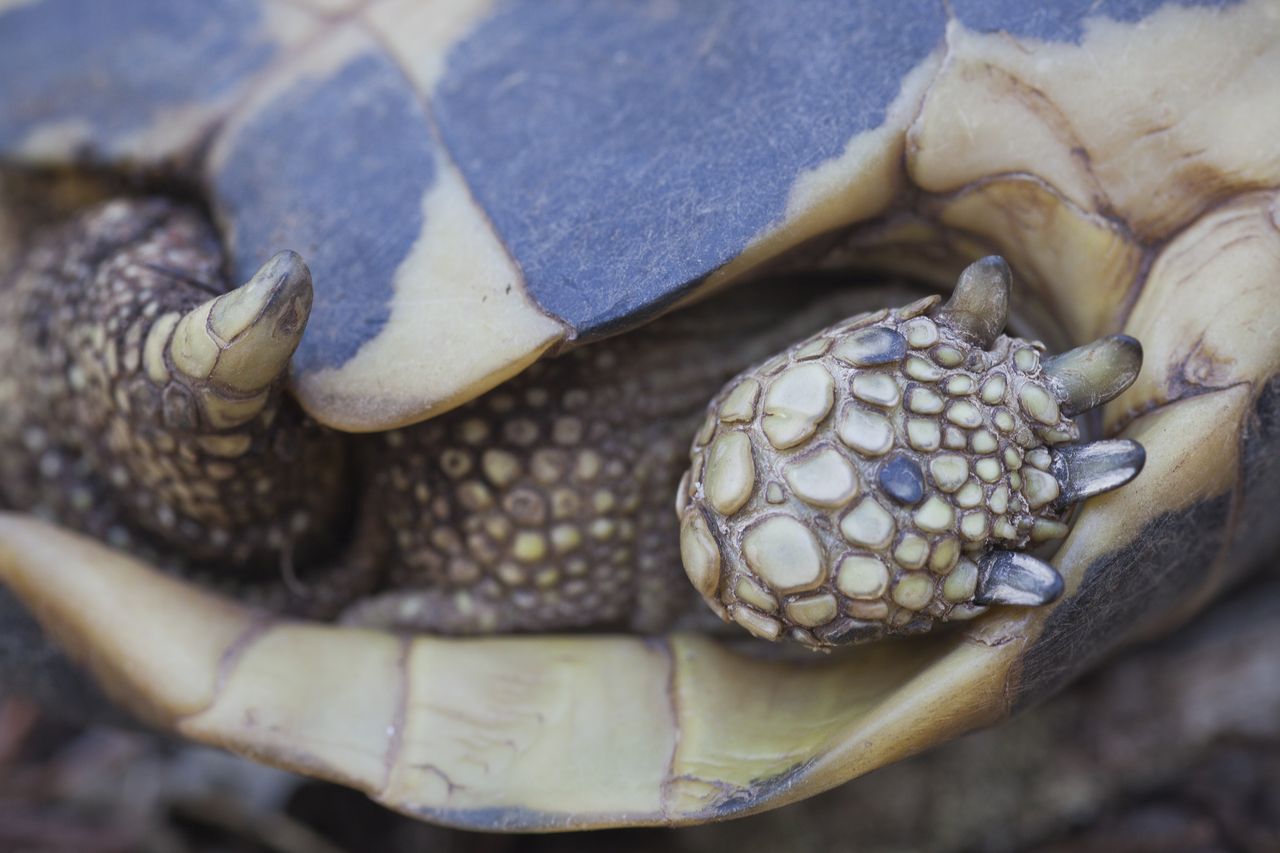
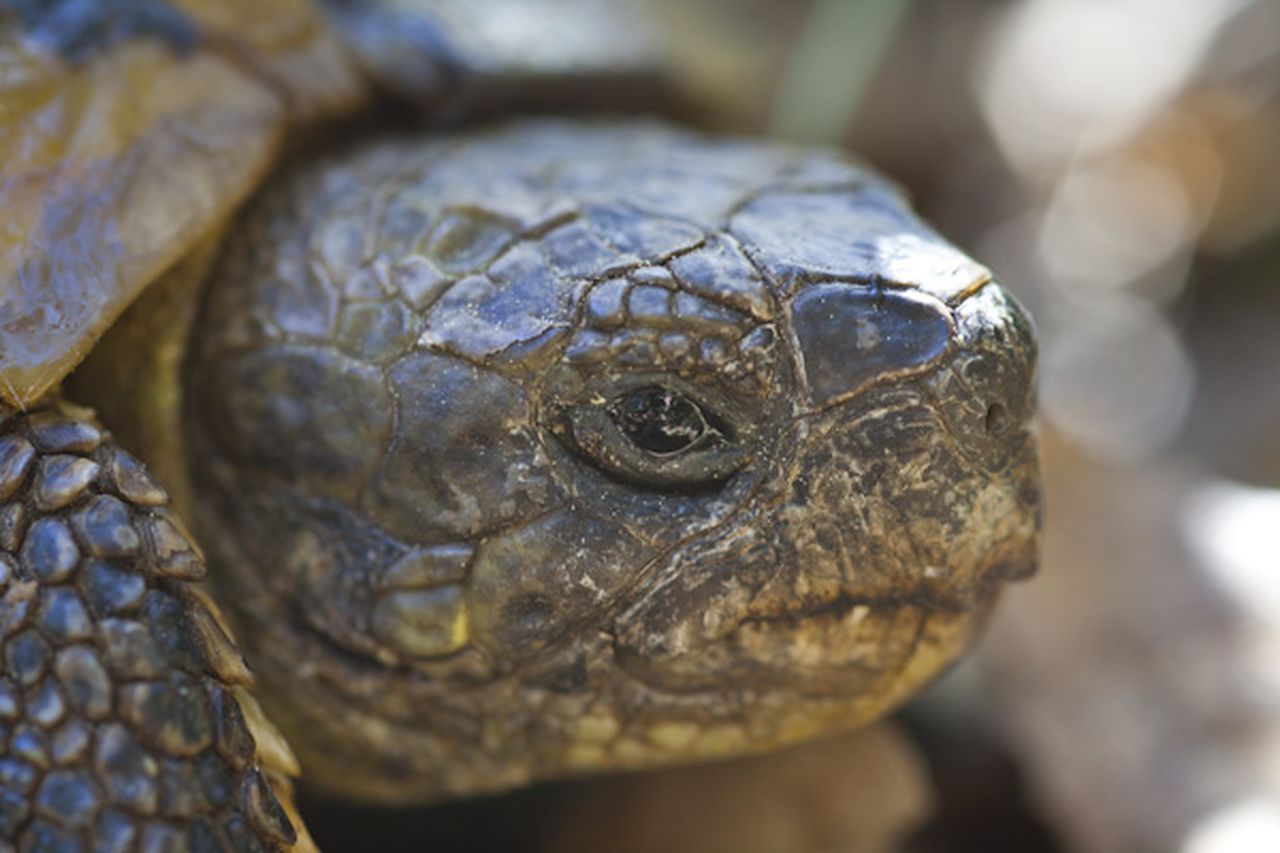
The main morphological characteristics of the Hermann’s tortoise
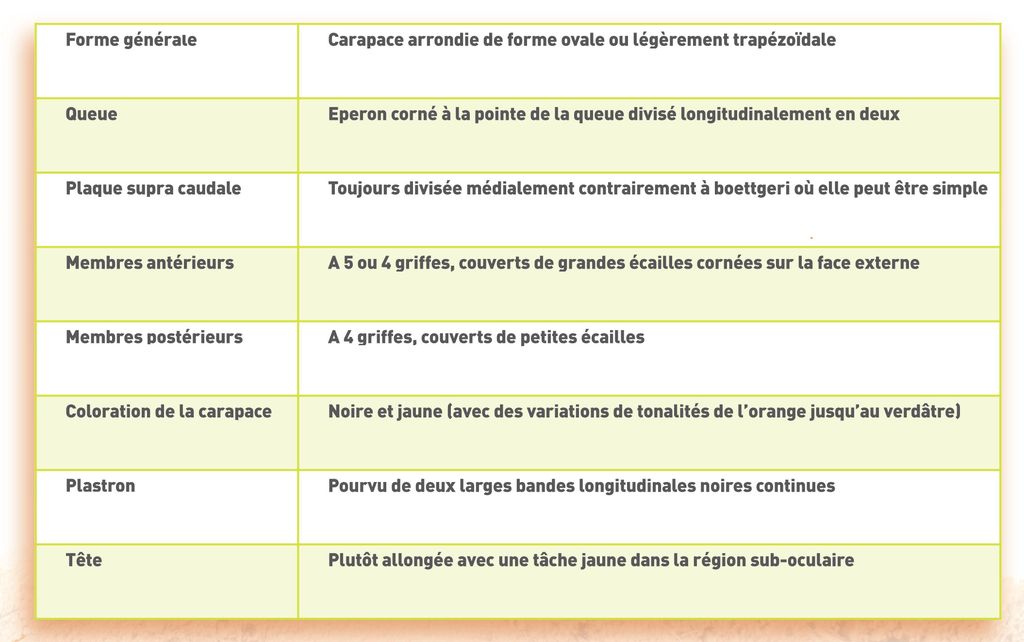
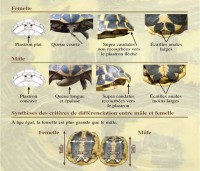
It is relatively easy to differentiate between the sexes in adults and sub-adults. Average body size is smaller in males than in females (about 12%); in males the tail (which conceals the penis) is much longer and the plastron is concave, whereas the plastron is flat in females.
The main morphological differences between sexes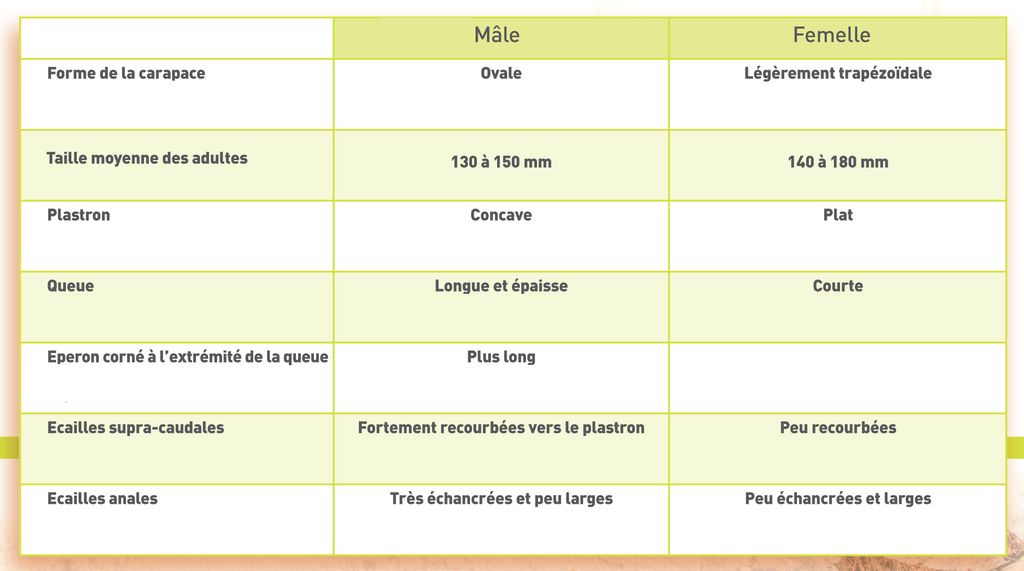

Testudo hermanni boettgeri is less brightly coloured; it is pale to greenish yellow, with less defined and lighter black patches. The dark patches on the plastron are isolated or nonexistent.
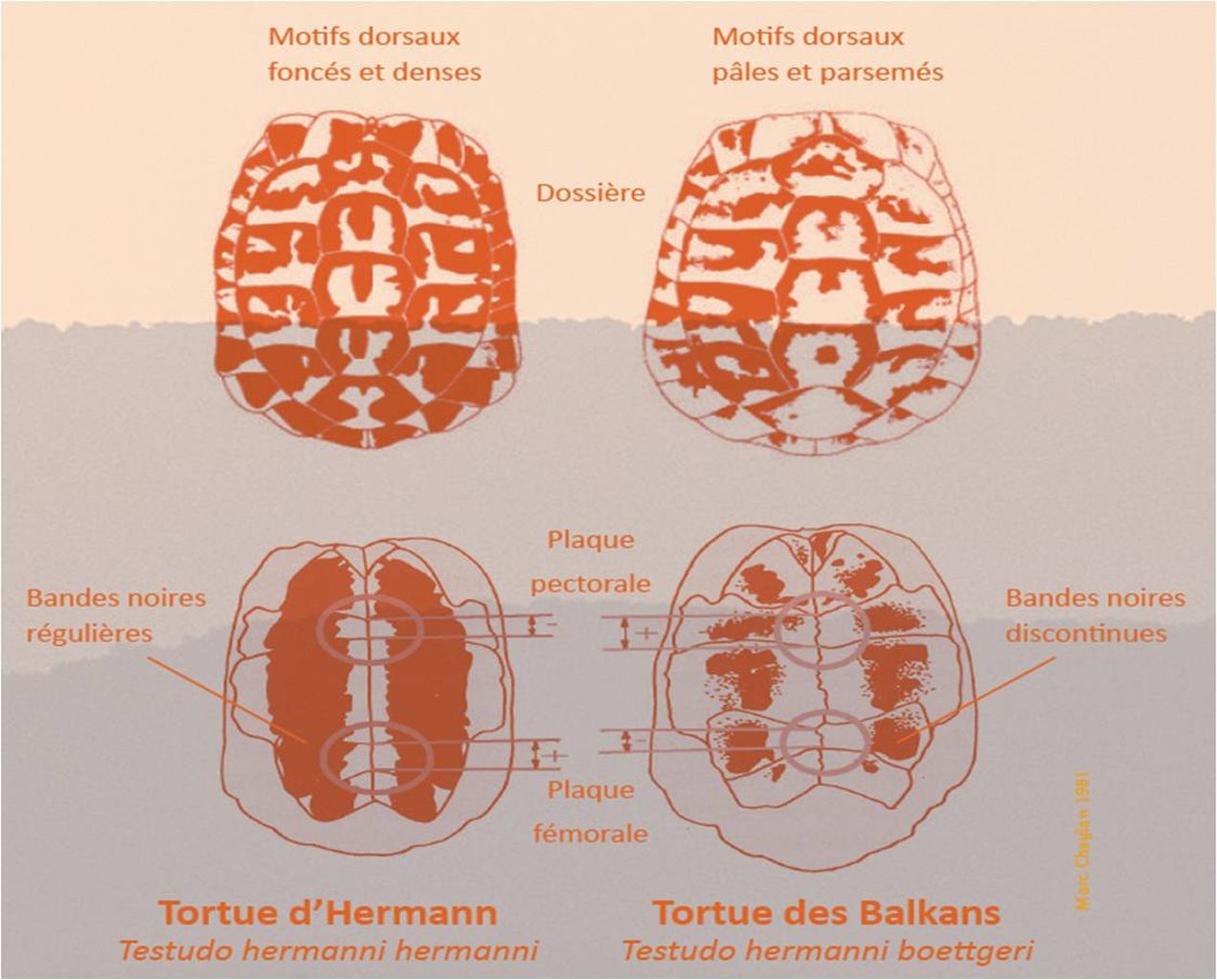
Balkans tortoise (T. hermanni boettgeri)
Features: trapezoidal carapace, black discontinuous or no bands, pale coloration, back black pattern less pronounced than in Testudo hermanni hermanni, pectoral suture scute below the femoral scute.
It originated, as its name indicates from the eastern part of the range of the Hermann’s tortoise.
Balkan and Greek Tortoises, two "exotic" tortoises in France
These two species are not native to France and should normally not be found in the wild in Corsica and the French mainland. But sometimes, because of releases of captive individuals, these exotic species are found in nature.
Crosses with wild populations of Hermann’s Tortoise are possible, they contribute to the degradation of natural populations by generating hybrid individuals less adapted to the local conditions than native specimens.
